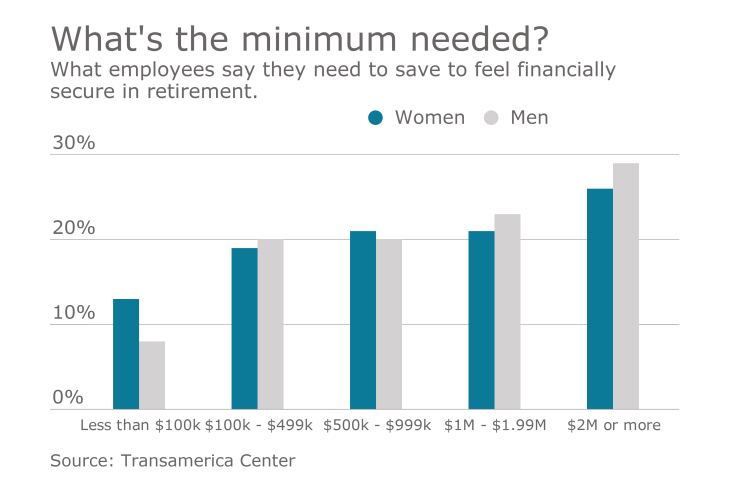New data shows a big change regarding women’s marital status — and it’s predicted to have major implications for their retirement planning.
Women now spend less than half of their adult lives married, either because they married later, have chosen not to marry or have gotten a divorce, according to research by the Center for Retirement Research at Boston College. In the past, women’s financial behavior was studied with the assumption that they were part of a couple or spent most of their adult years married.
“If women as a group now spend about half of their adult years unmarried, it probably makes sense to explore their savings and investment behavior separately from men,” the center says. “This change has significant implications for financial planning.”

Women may need to sock more funds away in health savings accounts and their 401(k) plan to ensure they have enough money to live a secure life in retirement. The research also indicates that employers may want to step up efforts in helping female employees plan for their post-work years.
See also:
Authors of “Do women still spend most of their lives married?” examined data gleaned from the Health and Retirement Study, a nationally representative survey that has interviewed people over age 50 every two years since 1992, to determine whether women spend most of their lives married.
They found that for those born between 1931 and 1941, 72% of women’s years between age 20 and their last interview were spent married. For those born between 1954 and 1959, that percentage dropped to 54%.
The age when these different groups of women married rose by about three years between the earliest cohort (1931-1941) at 21.4 years of age to the mid boomers at 24.3 years old. Of those surveyed, 3.9% of the original cohort group never married and 33.9% of those women got divorced. For the mid boomers, 12.2% of the women never married and 49.3% got divorced, according to the Center for Retirement Research at Boston College.
The report’s authors also looked at different demographic groups to see if that made a difference in how long women were married. It compared white and black women as well as those with some college education to those with a high school diploma or less.
They found that “the percentage of years married declined substantially for both white and black women.” They showed that black women have always spent fewer years married than white women and that the “decline in the percentage of years married is greater for black women than white women.”
While white women “saw a more than doubling of years spent divorced, black women did not,” the researchers found. Black women saw a much larger increase in the percentage of years not married.
Women with some college education and those with a high school diploma or lower saw the same decline in percentage of years married from about 70% to about 50%.
“The bottom line is that women, as a group, are going to spend less than half of their adult years as part of a couple,” the researchers concluded. “It shows up across race and educational attainment.”





